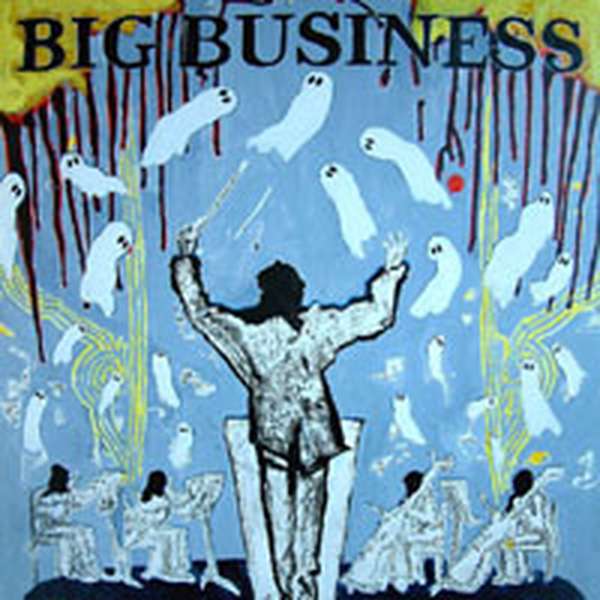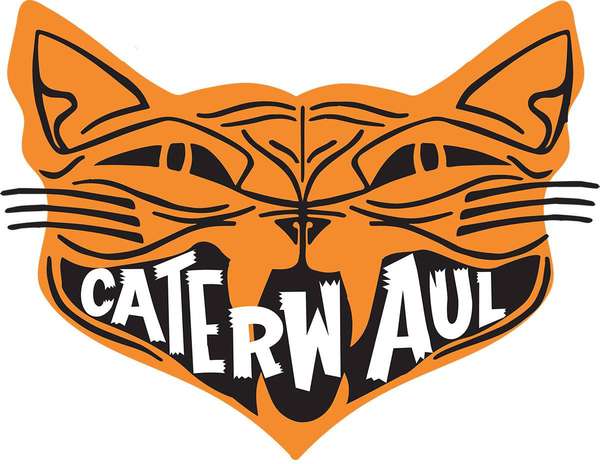In the late 80's and early 90's, Seattle was the place for any musician to be. A brief yet socially relevant counterculture was spawned, not too dissimilar to punk in the early 80's. The movement, being simply music or something more, had no name but was knighted "grunge" by the media. Much of the music was dirty, aggressive, brooding, and dark. Seattle became synonymous with loud guitars and flannel shirts.
Not much has changed in the 15 years since grunge broke out from the underground in Seattle. It is still dense with talented young bands creating the best music in the country. While the sounds may have changed, the DIY style and punk ideals have not. Instead of flannel shirts, musicians are opting for girl's jeans, but that hasn't changed the fact that the music is intensely aggressive.
Of all the current Seattle bands - a scene including the Blood Brothers, These Arms Are Snakes, Minus the Bear, and Pretty Girls Make Graves - Big Business is the band that retains Seattle's grunge sound better than anyone, while still managing to originally blend punk, hardcore, and metal successfully.
Only a two-member band, Big Business comprises former Murder City Devils' drummer Coady Willis and Jared Warren formerly of Karp. But this is no White Stripes. Big Business has taken the road less traveled by opting not to have a guitarist. But with the amount of distortion Warren has running through his bass, it's easy to forget there are no guitars on Head for the Shallow aside from a few, brief appearances.
Head For the Shallow begins with "O.G.," a rumbling, high-energy opening that sounds like a soundtrack for tyrannosauruses or the shark from Jaws. It's a hyperactive, bowel-shaking earthquake - as Cake would put it - that could blow out your speakers if not adjusted properly. However, "O.G." features one of those brief guitar appearances, which manages to increase the cheese factor exponentially.
The next track is "Focus Pocus." Hmmm. You know what this song reminds me of? The previous track, maybe a little too much. Same formula: loud, powerful, rumbling bass; exceptional, heavy-hitting, tight drumming; über-high, pounding, relentless energy; and a cheesy guitar solo. Well, the formula worked once; why not work a second time? Okay, I get it: keep the energy level super high to open the album. Good call.
"White Pizazz" follows. To cut straight to the point, the track is exactly the same as its two predecessors. By this point, a strong noticeable pattern is emerging, musically, emotionally, and structurally. Expect the same in your face, loud, heavy, intense sound.
After noting the first three tracks, it's not really necessary to go in depth with the other tracks on the album. But don't be mistaken, just because the subsequent tracks all have the same formula, doesn't make them boring or unworthy. It's necessary to distinguish this band's talent and musicianship from their songwriting ability onHead for the Shallow. What Big Business lacks in dynamics and variation, they make up for in outstanding musicianship. Warren keeps things interesting and lively with his superb bass playing by providing the album with a near incomparable level of heaviness. Willis' drumming is so exceptional on Head For the Shallow that I dare compare him to Brann Dailor of Mastodon. While their styles are considerably different, Willis can certainly rival one of metal's most publicly renowned drummers - see "Technically Electrified" for further evidence.
Head for the Shallow has two glaring weaknesses. First and foremost, if you've every seen Big Business live, you know exactly what I'm talking about. To their own fault, there is no way they can accurately translate the power and intensity of their live show onto a record. Having the fortune of seeing Big Business twice, I can honestly say the album really lacks the passion of their live show. They came pretty close to displaying the raw power on record, but, for example, Willis' drumming is near frightening live. He drummed so hard the last time I saw them, splinters from his sticks were shattering with every pummel, a few of these splinters gouging various parts of my face. So, basically, see Big Business live.
Secondly, the album has some questionable production. Phil Ek, who has done some excellent work with other Northwest acts such as Built to Spill, Modest Mouse, and Pretty Girls Make Graves, did not sufficiently accentuate Big Business' strong points. While Warren's destructive bass playing is necessary to stake the band's sound, often times it overpowers Willis' magnificent drumming, a costly mistake. Ek also chose to use high reverb on Warren's vocals, a logical tact for bands like Built to Spill and Modest Mouse, but like the guitar solos, it really turns up the cheese-o-meter. For Big Business' sound being so gritty and thick, the vocal production really counteracts the heaviness of Head for the Shallow.
So for an eight-track, 35 minute album, Head for the Shallow has its highs and its lows. While certainly nothing to rush to the store for, it shouldn't be disregarded either. It is a great representation of Northwest punk and metal, displaying that in a pretty watered-down genre, some bands can still kick complete ass. If nothing else, the album would be a great introduction to the band and its live show. If you like them on record, you are certainly going to love them live.






